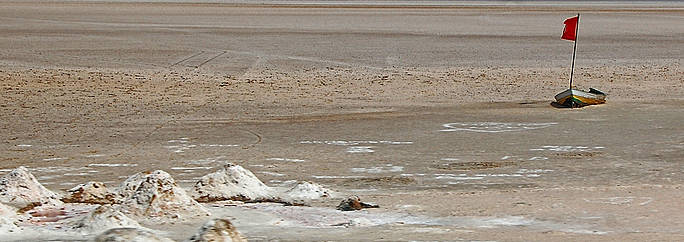The bottom of Chott el Djerid is located between 10 and 25 meters (about 30 to 80 feet) below sea level. The lake’s width varies widely; at its narrowest point, it is only 20 km (12 mi) across, compared to its overall length of 250 km (160 mi). At times, parts of it appear in various shades of white, green and purple. The narrow eastward inlet of the chott is also known as Chott el Fejej.
It is the largest salt pan of the Sahara Desert, with a surface area of over 7,000 km2 (some sources state 5,000 km2). The site has a typical hot desert climate. Due to the harsh climate with mean annual rainfall of below 100 mm and daytime temperatures sometimes reaching 50 °C (122 °F) or more during summer with dense solar radiation, water evaporates from the lake. In summer Chott el Djerid is almost entirely dried up, and numerous fata morganas occur. Situated at 33 ° 42’N 8 ° 26’E in the center-west of the country, between the cities of Tozeur and Kebili.
During winter, a small tributary of water can be seen discharging into the lake.
Because the flooded area is very variable, values presented for the area of the lake (or its basin, which is almost always dry), can vary widely. Some sources provide values as high as 10,000 km². Similarly, figures given for altitude vary between 10 meters above and 25 meters below sea level.
Currently, freshwater irrigation schemes are being applied in the region to help eliminate salt from soils and increase the productive area.
In popular culture
Currently, freshwater irrigation schemes are being applied in the region to help eliminate salt from soils and increase the productive area.
Chott el Djerid was used as a filming location for the Star Wars series, among others. It was also described in Jules Verne’s last novel, Invasion of the Sea.According to legend, it was there that the Greek goddess Athena was born.[13]
The lake is the setting of Frank Heller’s book The Thousand and Second Night, An Arabesque.
The Chotts are also discussed in Fountains in the Sand, by Norman Douglas. His account is both scientific and historic.



